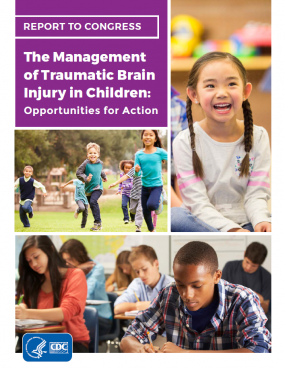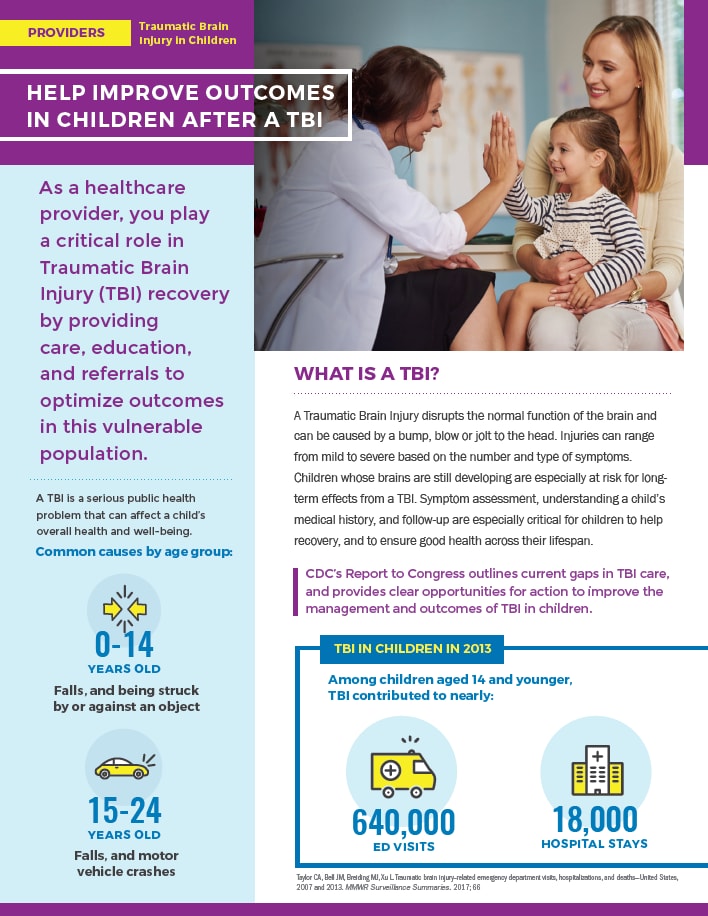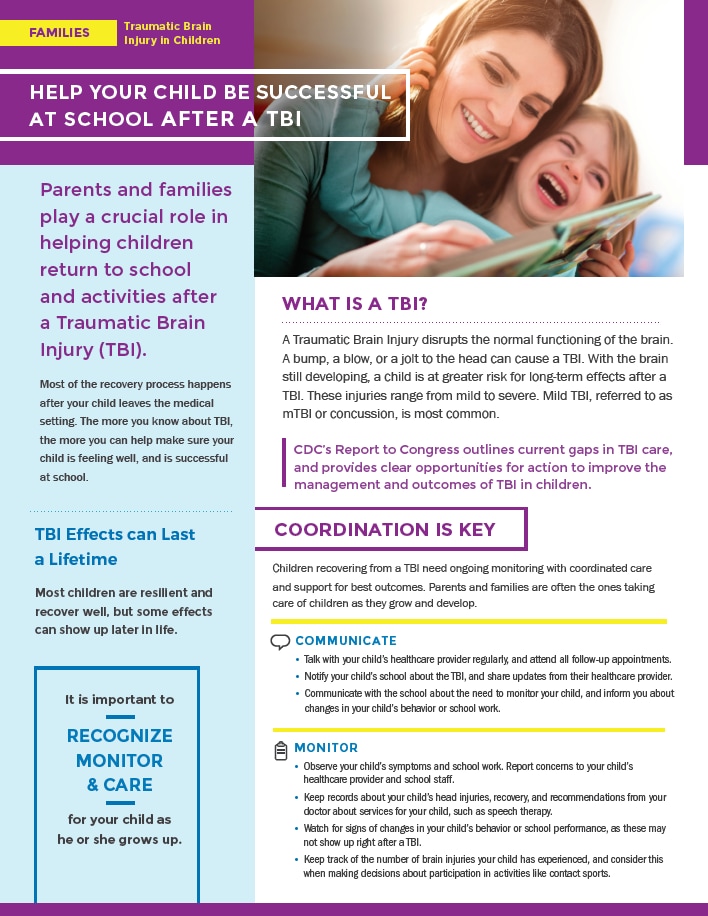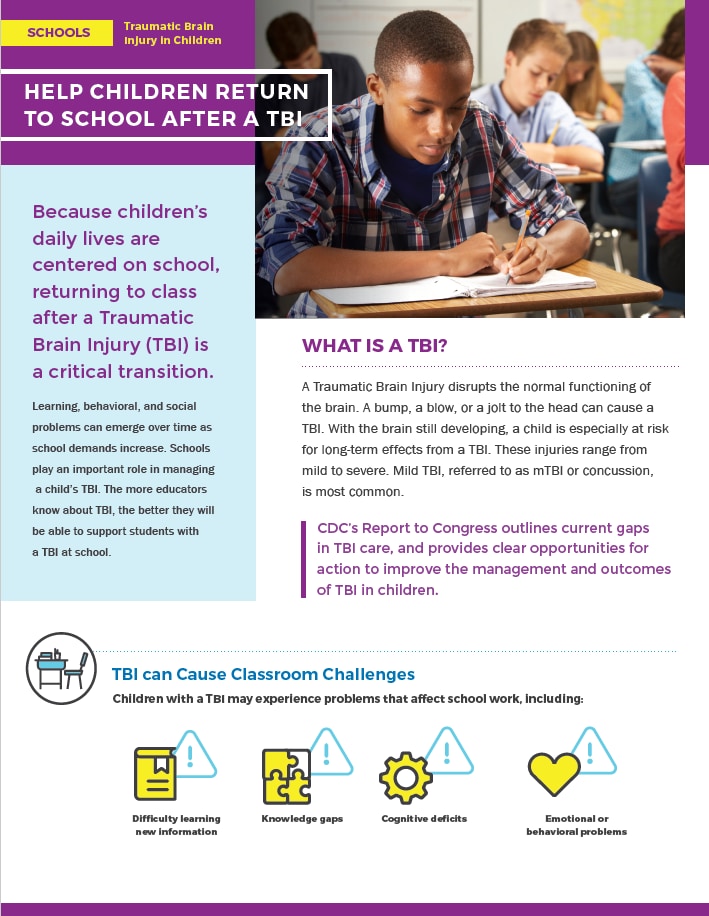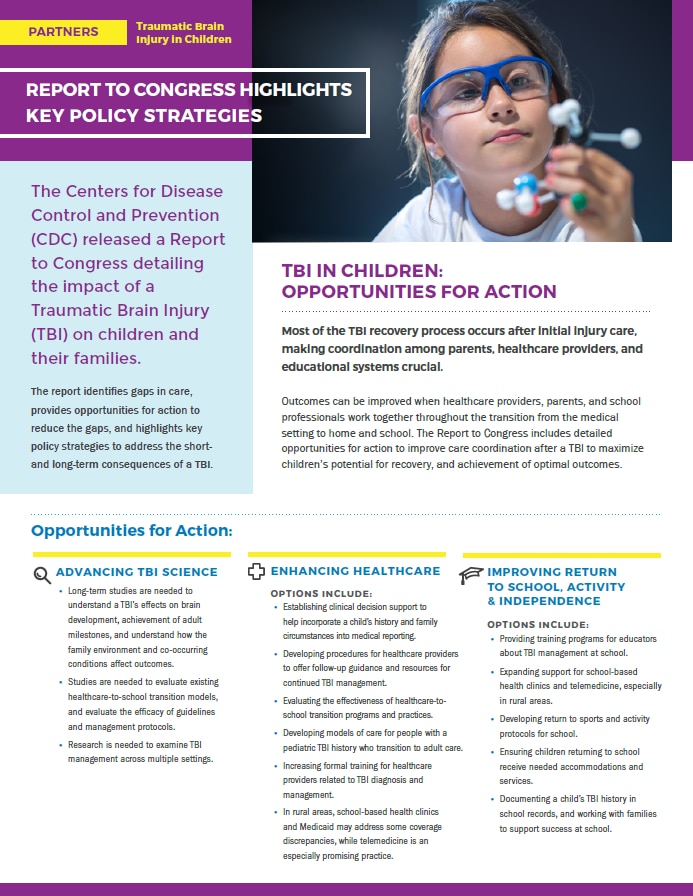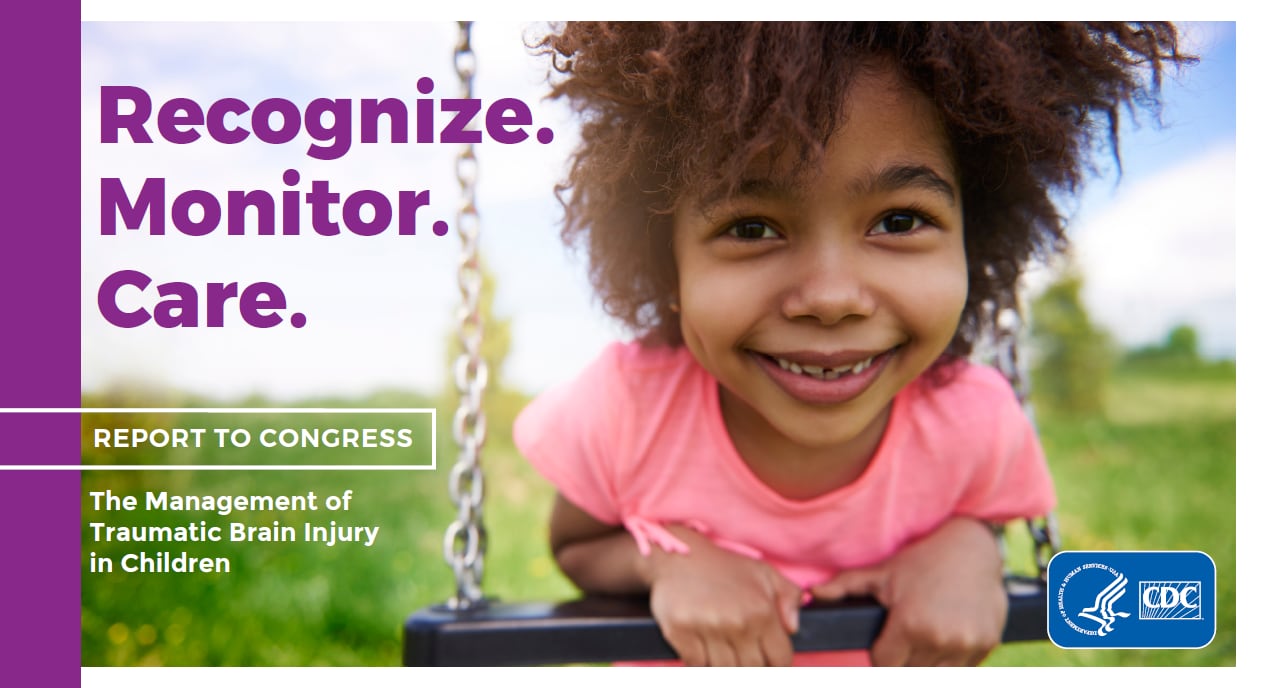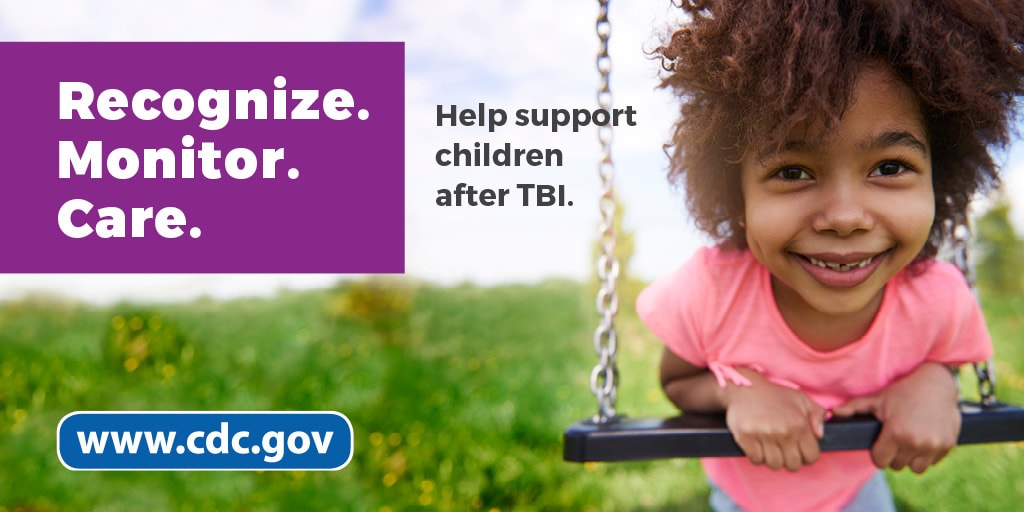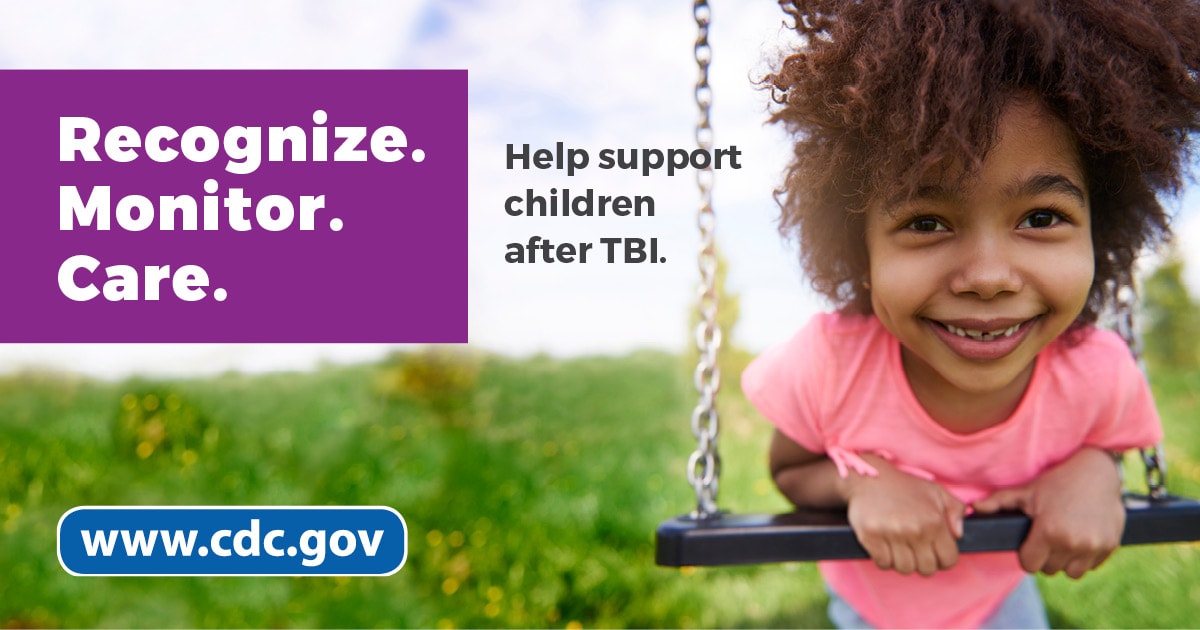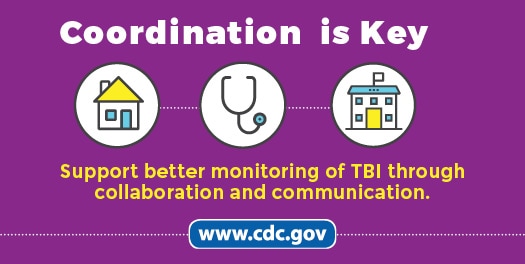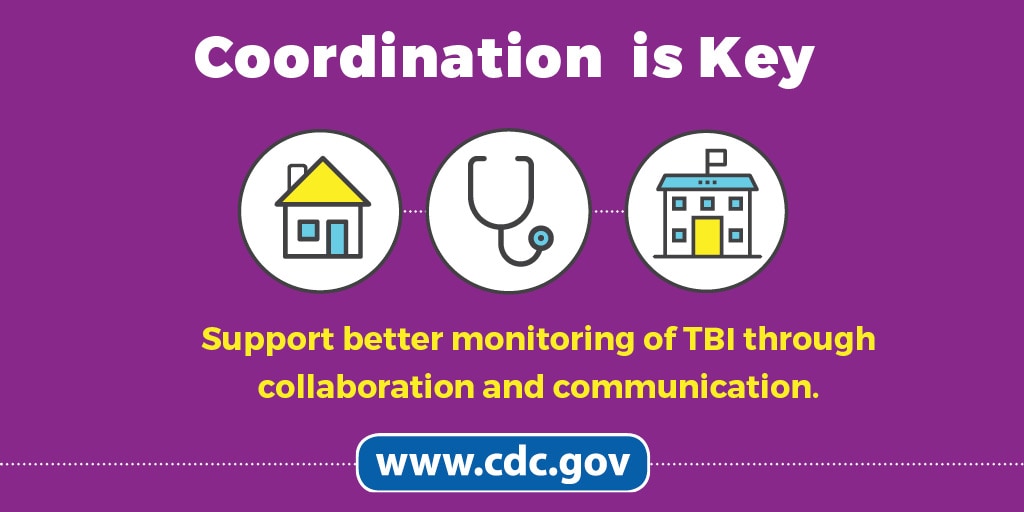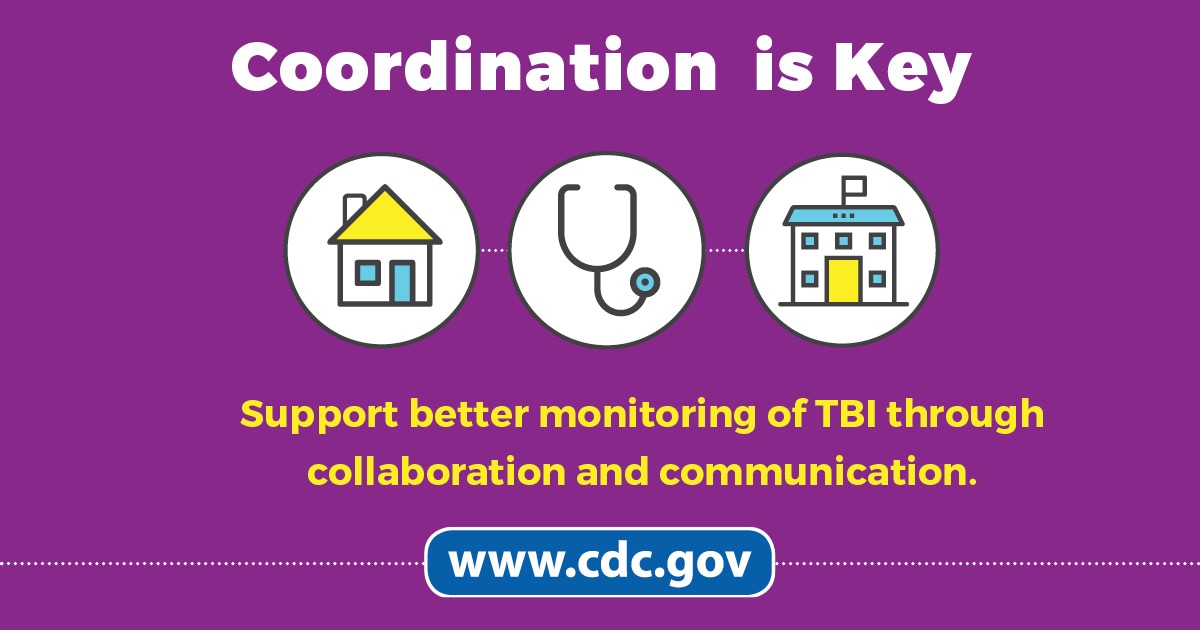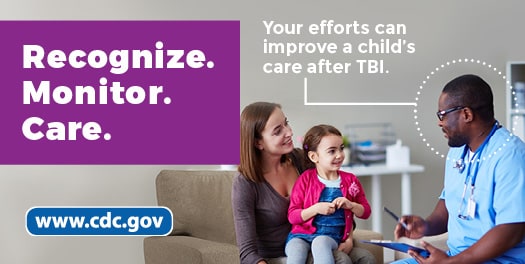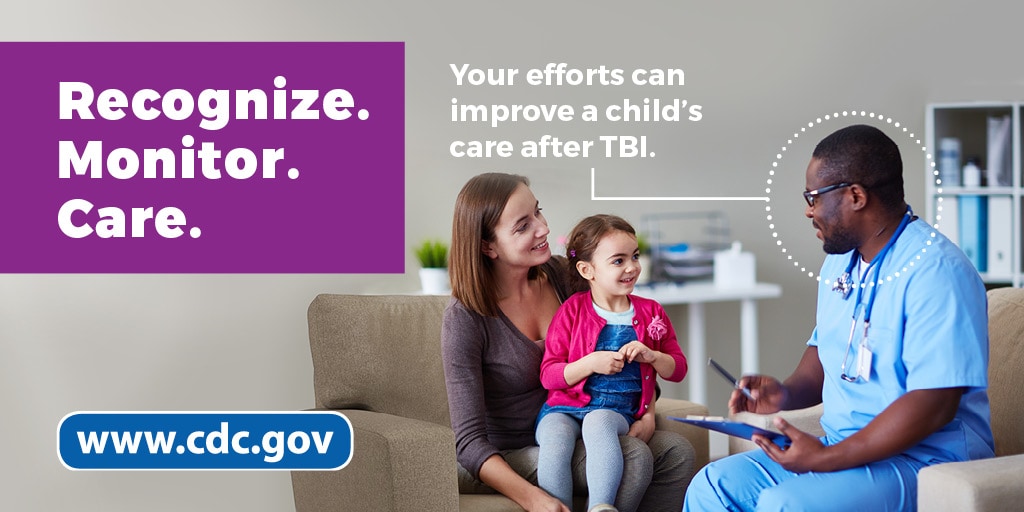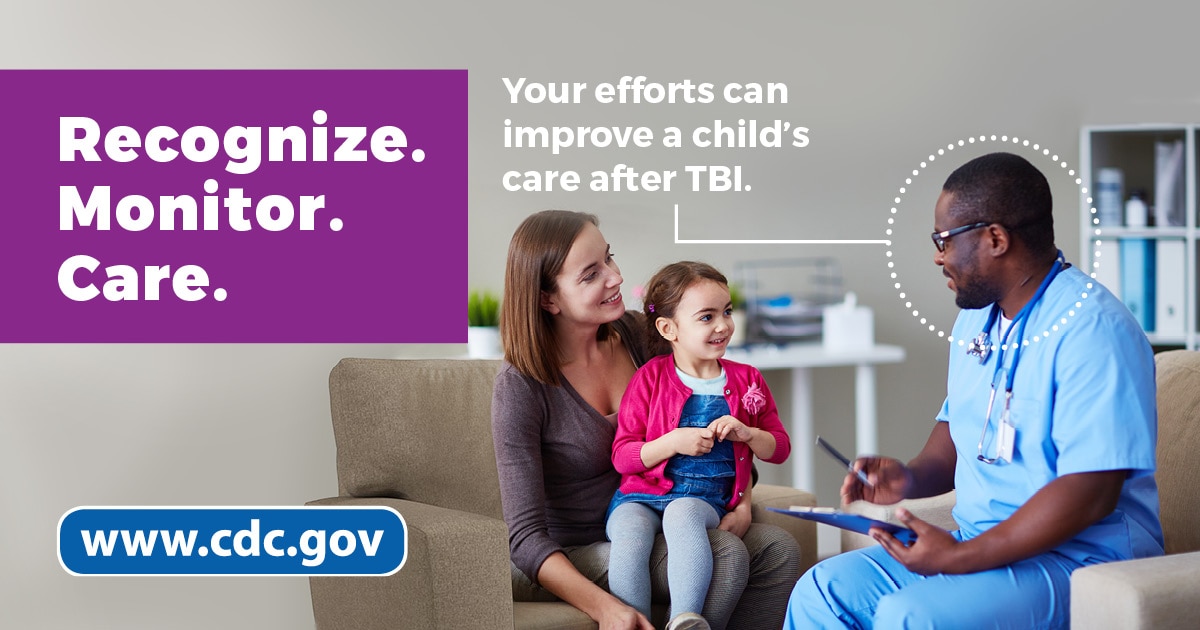Report to Congress on The Management of TBI in Children
Traumatic brain injury (TBI) in children is a significant public health problem in the United States. A traumatic brain injury disrupts the normal function of the brain, and can be caused by a bump, blow, or jolt to the head, or a related injury.
CDC recently released a Report to Congress on The Management of Traumatic Brain Injury in Children, which details the impact a TBI can have on children and their families. The report also:
- Identifies gaps in care
- Provides opportunities for action to reduce the gaps, and
- Highlights key policy strategies to address the short and long-term consequences of a TBI.
Children have the highest rate of emergency department visits for traumatic brain (TBI) injury of all age groups. TBI affects children differently than adults. An injury of any severity to the developing brain can disrupt a child’s development, and may result in restrictions in school and participation in activities (e.g., sports). As a result of TBI, children can experience changes in their health, thinking, and behavior that affect learning, self-regulation, and social participation, all of which are important in becoming a productive adult.
CDC’s newest Report to Congress outlines current gaps in TBI care, and provides clear opportunities for action to improve the management and outcomes of TBI in children. Click the link below to read the Report.
The management of traumatic brain injury (TBI) in children is complex and depends upon multiple service delivery systems that frequently do not provide systematic or coordinated care to ensure a successful recovery.
This executive summary for CDC’s Report to Congress on The Management of TBI in Children outlines the public health burden of TBI in children and adolescents, including the range of outcomes that may be experienced following a TBI. In addition, the summary identifies gaps that exist and some practices that hold promise in addressing those gaps. Finally, opportunities for action are offered that suggest ways to improve TBI care in children, as well as how we might advance our understanding of TBI care in the future.
